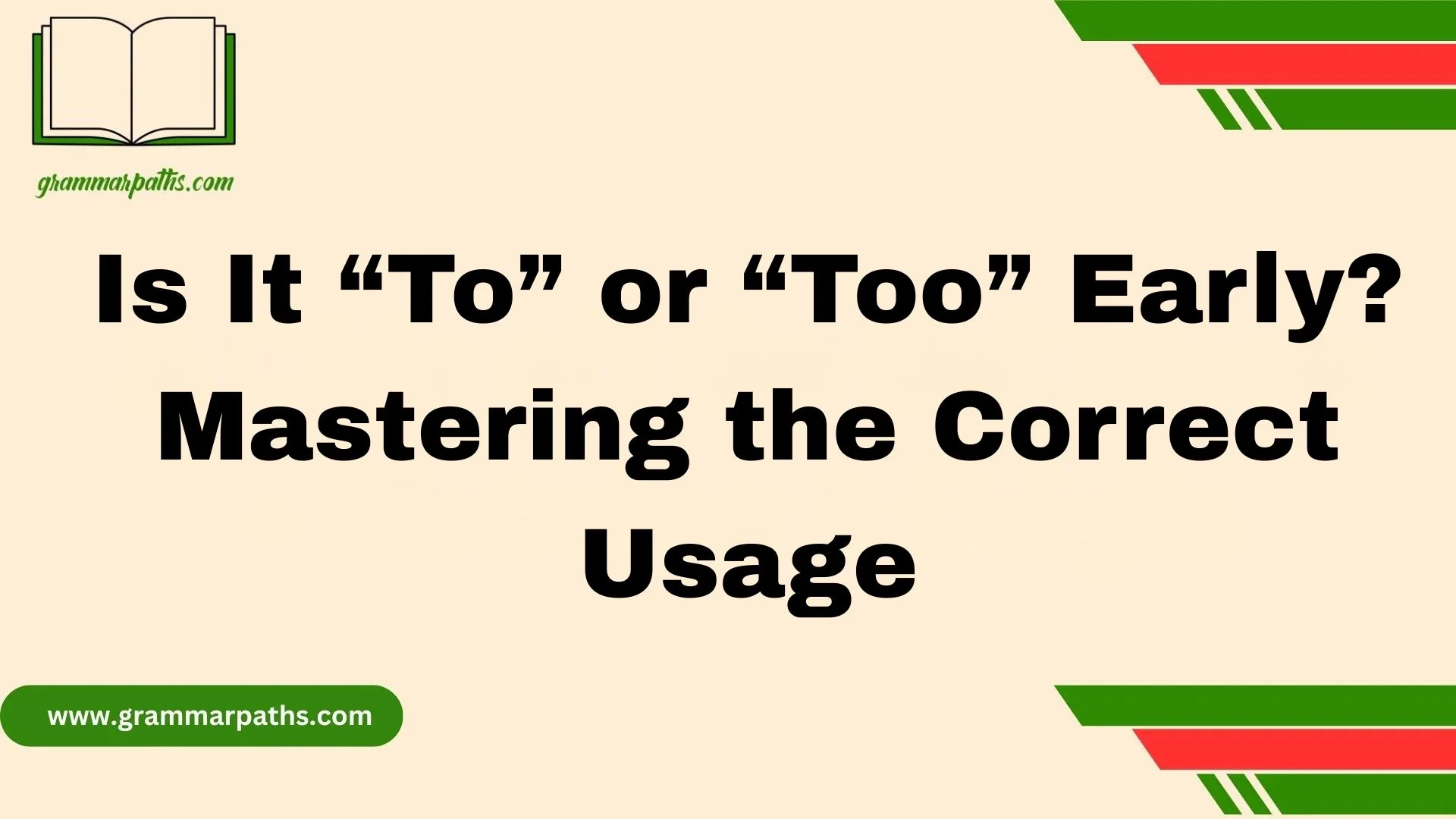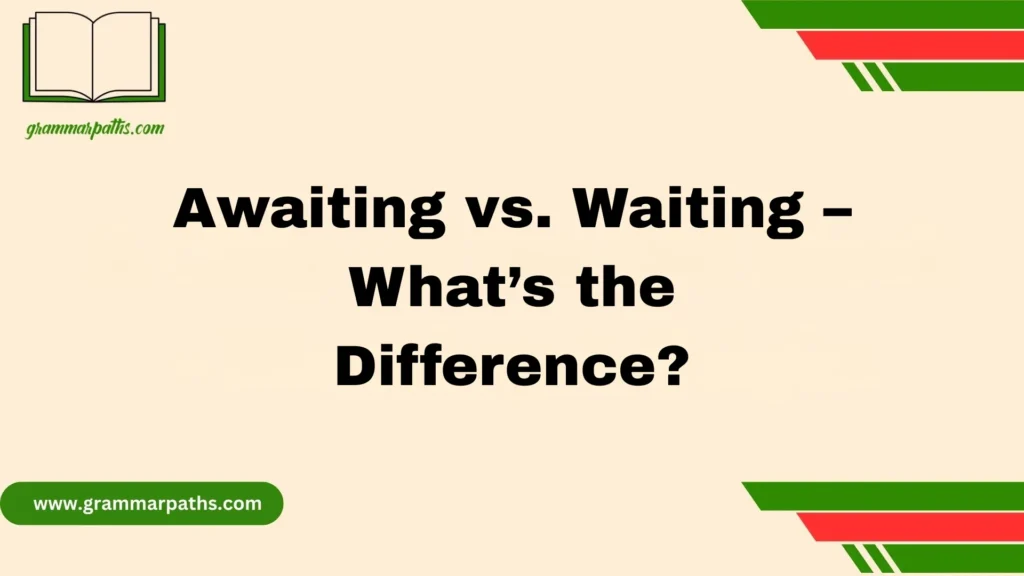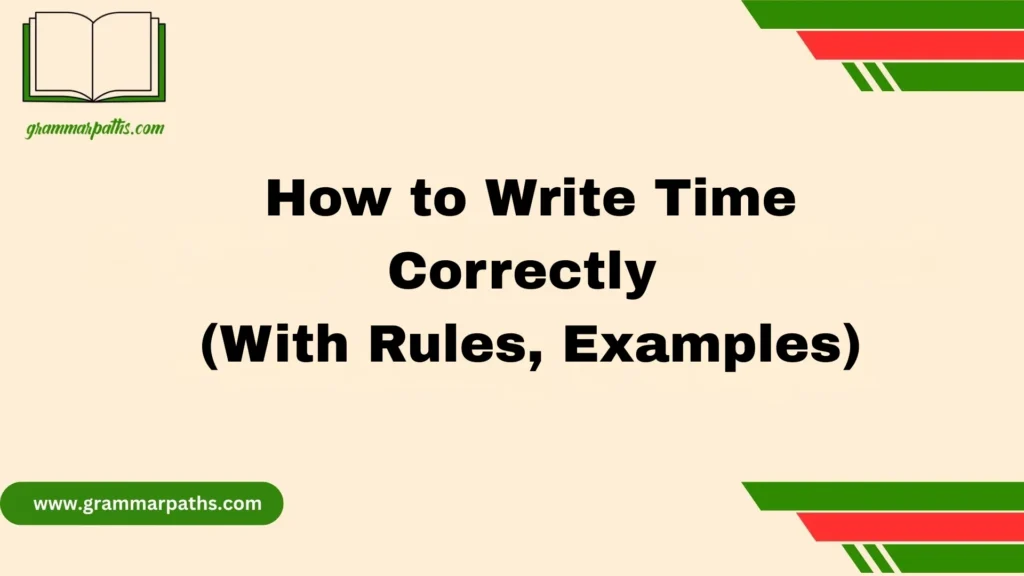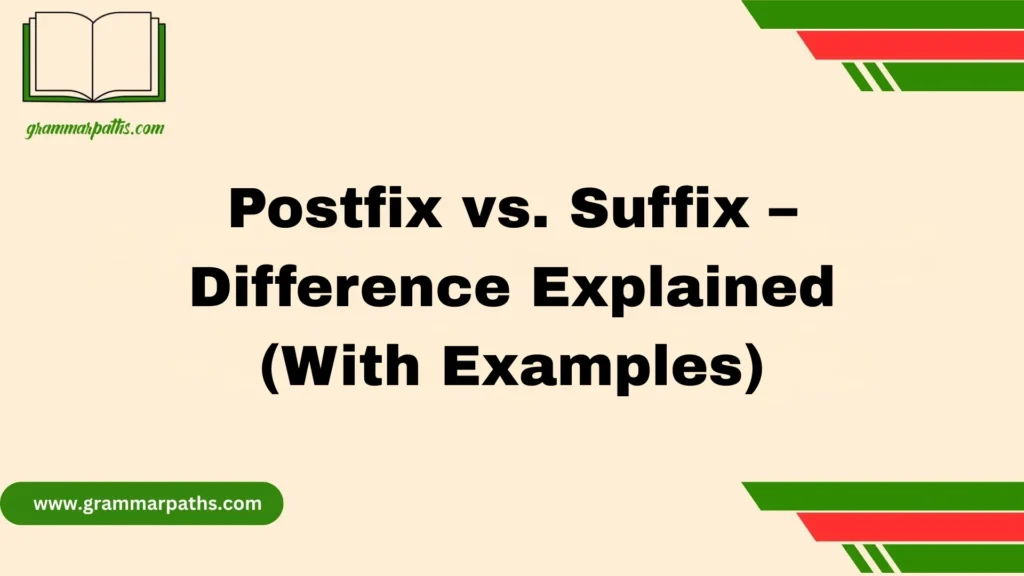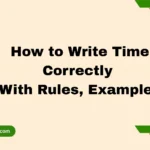I’ve often noticed how people, especially on YouTube and Reddit, get confused about when to use “to” or “too.” It’s a common mistake that even grammar sticklers sometimes miss. The words are very similar but have different purposes, which can drive some folks mad. When you see comments or posts, it’s easy to spot the abused or misused versions, but understanding the rules helps a lot. I remember once trying to explain this to a friend who would mix these two words all over the place — it’s not just them; it happens to anyone learning the ropes.
The key is to remember that “to” is used when pointing near or going up somewhere, like saying “going to the top,” while “too” means “also” or “excessively,” like “too small.” Putting these words into the right context is everything. The article you’re reading now aims to help by clearly exploring and understanding the differences without the confusion. Don’t spell them incorrectly or rush — knowing when it’s “too early” versus “to early” makes a world of difference. Trust me, once you get these rules down, writing will feel much smoother and less frustrating.
Why Getting “To” vs. “Too” Right Matters
You might think these words are small and unimportant, but mixing them up can make your writing look careless or confusing. Imagine telling someone, “It’s to early to leave” — it sounds odd, right? The right phrase is “It’s too early to leave,” which means the timing isn’t right yet.
This confusion pops up all the time in everyday writing, texts, emails, and even professional settings. Understanding the difference not only sharpens your grammar but also helps you communicate clearly. So let’s break down the difference with clear explanations and examples.
What “To” Really Means: The Basics of This Versatile Preposition
To is one of the most common prepositions in English, and it has several uses:
- Direction or movement: “I’m going to the store.”
- Purpose or intent: “I gave the book to her.”
- Part of infinitive verbs: “I want to eat.”
In the phrase “to early,” the word to could only fit if it is part of an infinitive verb phrase, like “to arrive early.” But standing alone before early, it doesn’t make sense.
Examples of “to” used properly with “early”:
- “I need to leave early tomorrow.”
- “She promised to arrive early for the meeting.”
In these cases, to is followed by a verb, making the phrase grammatically correct.
The Power of “Too”: Understanding Intensifiers and Excess
Too is an adverb that means excessively or more than necessary. When you say “too early,” you mean earlier than the right or expected time.
Think of too as a volume knob turned up too high. It intensifies the adjective that follows it, emphasizing that something goes beyond the normal limit.
Examples of “too” in timing:
- “It’s too early to call her.”
- “He woke up too early and missed the bus.”
In both sentences, too tells you the timing is not just early, but excessively early.
Breaking Down the Phrase “Too Early”: When and Why It Works
The phrase “too early” often appears when talking about time-sensitive situations, deadlines, or expectations. It signals that an action or event is premature.
Real-world examples where “too early” fits:
- Events: “Arriving too early can be awkward.”
- Deadlines: “Submitting the report too early might mean missing updates.”
- Feelings: “She felt it was too early to decide.”
You might also hear variations like “way too early” or “far too early,” which add more emphasis.
Why “To Early” Is Almost Always Wrong: Grammar Rules Explained
Using to early without a verb after to is usually incorrect. Since to is a preposition or part of an infinitive, it must be connected to a verb or noun phrase.
Mistakes happen when writers confuse to and too because they sound the same. But remember, too modifies adjectives or adverbs to show excess, while to shows direction, purpose, or links verbs.
Common errors include:
- “It’s to early to start.” (Incorrect)
- “It’s too early to start.” (Correct)
Look at how these sentences sound when read aloud—the correct version flows naturally, while the wrong one feels off.
Practical Tips for Remembering When to Use “To” vs. “Too”
Here are some easy ways to avoid mistakes:
- Tip 1: If you can replace the word with “also” or “excessively,” use “too.”
Example: “It’s too hot” → “It’s also hot” (makes sense). - Tip 2: If the word shows direction or is part of a verb, use “to.”
Example: “I’m going to the store.” - Tip 3: Remember “too” has two ‘o’s for “extra” or “excess.” That helps recall it means “more than needed.”
- Tip 4: When in doubt, read the sentence out loud and ask: Does this mean ‘excess’ or ‘direction’?
Quick Reference Table: “To” vs. “Too” with Examples
| Word | Function | Example Sentence | Quick Tip |
| To | Preposition/Infinitive marker | I need to finish early. | Shows purpose or direction |
| Too | Adverb (intensifier) | It’s too early to start now. | Means “excess” or “also” |
Advanced Nuances: When “To” and “Too” Appear Close Together
Sometimes, to and too appear side by side legitimately, which can confuse even advanced learners.
Example:
- “I have too much to do.”
Here, too means “excess,” and to starts the infinitive verb “do.”
Another example:
- “She’s going to arrive too early.”
The first to indicates direction, and too intensifies “early.”
When both appear, focus on each word’s role—whether it shows direction or excess—and you’ll get it right.
Insights from Grammar Experts and Style Guides
Leading grammar authorities agree on this distinction:
- The Chicago Manual of Style clarifies that too is an intensifier used before adjectives and adverbs, while to is a preposition or infinitive marker.
- Merriam-Webster notes that confusion between these words is common but avoidable by remembering their different functions.
- The Associated Press Stylebook also stresses the importance of proper usage, especially in professional writing.
These guides emphasize practice and awareness as key to mastering the difference.
Summary and Final Thoughts: Mastering “To” vs. “Too” Early Once and For All
Understanding the difference between to and too will improve your writing and speaking clarity. Remember:
- Use to for direction, purpose, or with verbs (infinitives).
- Use too to mean “excessively” or “also.”
- The phrase “too early” means something happens before the right time.
- Avoid mixing these up, especially before words like “early.”
With practice and these simple tips, you’ll never second-guess your use of to and too again.
Conclusion
Getting the difference between to and too right is important for clear writing. To usually shows direction or purpose, while too means “also” or “more than needed.” Mixing them up can confuse your reader. With a little practice and attention to context, you’ll use them correctly every time.
FAQs
Q1: When should I use “to” instead of “too”?
Use to when showing direction, place, or purpose. For example, “I am going to the store.”
Q2: What does “too” mean?
Too means “also” or “more than necessary.” For example, “It is too hot outside.”
Q3: Can “too” be used with early?
Yes! Saying “It’s too early” means it’s earlier than desired or expected.
Q4: Is “to early” correct?
No. “To early” is incorrect because “to” doesn’t fit here. The right phrase is “too early.”
Q5: How can I avoid confusing these words?
Remember to shows direction or purpose, and too means “also” or “excessive.” Practice with examples and read carefully.

Mia Rose is the passionate writer and founder of GrammarPaths.com, a resource dedicated to helping learners master English grammar, idioms, and writing skills with ease. With a deep love for language and years of experience in teaching and content creation, Mia simplifies complex grammar rules into clear, practical guides that readers can instantly apply.
